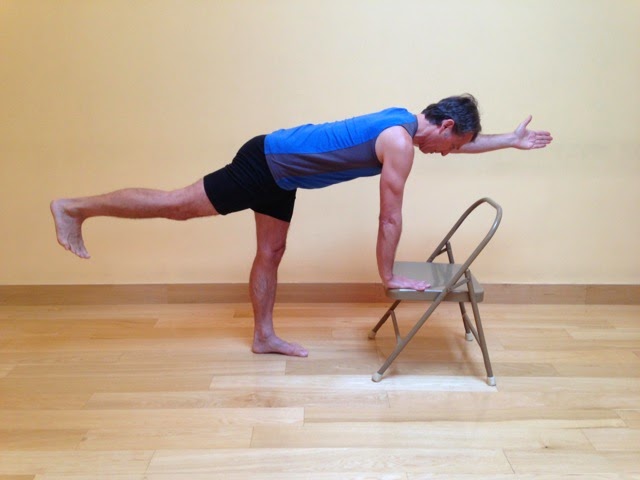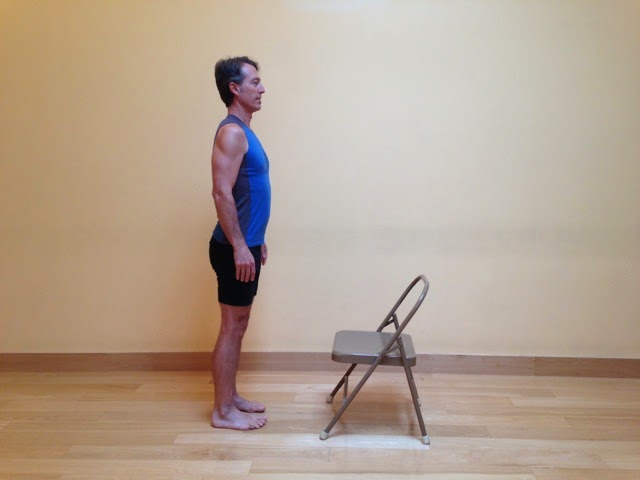
A: Do I have a variation for those who can’t be on their knees?! Why, of course I do! Before I get to that, let’s review the benefits and challenges of the full Hunting Dog Pose. As I shared with you in Featured Pose: Hunting Dog Pose, Hunting Dog pose is a great precursor to strong poses like Warrior 3 and is a wonderful way to tone and strengthen your upper body, especially the Serratus Anterior muscles, as well your pelvic stabilizers and core belly muscles. It’s also a good pose for improving core strength as well as strengthening the lower back. I prescribe this pose for:
- lower back pain
- balance issues
- fatigue (when standing poses are too tiring)
- improving right/left coordination
- building arm strength
As most of you probably already know, you do the full pose by starting in Hands and Knees position. You then take one leg back and up parallel with the floor and your opposite arm up and reaching forward while keeping your torso and belly engaged in a neutral arch of your lumbar spine. Usually you hold the full pose for a while and then lower your arm and leg, and repeat on the other side.
For those who cannot be on their knees, assuming that they cannot bear pressure on the shin and knee or are unable to fully bend the knees to 90 degrees due to arthritis, injury, or other causes, I suggest the following:
1. Start in Mountain pose (Tadasana), about a foot or so from the seat of a chair or another strong prop that is high enough to allow you to keep your torso and abdomen about parallel with the floor when you place your hands on it.

2. From Mountain Pose, come into Half Standing Forward Bend (Ardha Uttanasana) and place your hands on the chair seat. Check whether your torso and abdomen are about parallel with the floor, stepping further away from the chair if necessary.

3. Step your feet a bit closer together than hip-distance apart and lift your right leg up to near parallel with the floor, or in line with the angle of your torso, without changing your hip position or the arch in your spine.

4. Firm your right elbow joint and keep your chest lifting up into your right shoulder blade as you reach your left arm forward and parallel with the floor. Keep your head in line with the rest of your spine.

5. Hold the pose for 6-12 breaths before returning your raised hand to the chair and your raised foot to the ground.

6. Bend your knees slightly and come up to Mountain pose for a few breaths before repeating on the second side.
Because your legs are straight in this version and you are farther from the ground than in classic Hunting Dog pose, your lifted leg and its supportive muscles will be working harder than in the kneeling version. So when you are initially practicing this pose, you may want to stay for shorter periods of time and gradually build up to longer holds. And you may need to do more warm ups for both legs before trying it in a practice. I’d recommend stage one of Reclined Leg Stretch pose to get the feeling of separating your two legs that you will experience when you flip upside down for the standing version of Hunting Dog pose.

Have fun, and let me know what you think!
Subscribe to Yoga for Healthy Aging by Email ° Follow Yoga for Healthy Aging on Facebook ° Join this site with Google Friend Connect
No comments:
Post a Comment